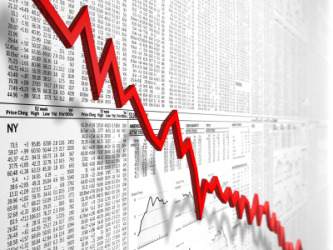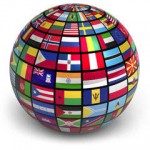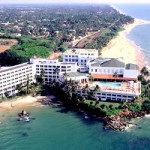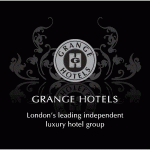
John Lewis Partnership plc is UK partnership company that owns 37 John Lewis department stores, and 277 Waitrose supermarkets across the UK and a set of other businesses. The partnership employs 81,000 permanent staff that is referred to as Partners, who contribute to the annual gross sales of over £8.7 billion (About Us, 2012, online). Dedicated to the vision of its founder John Spedan Lewis ‘to create a company dedicated to the happiness of the staff through their worthwhile and satisfying employment in a successful business, John Lewis has been able to provide all its Partners with 18% bonus on their share profit for the financial year of 2010/2011 at a total cost of £194.5m. (Annual Reports and Account, 2011) It is important to note that “John Lewis’s strategy is remarkably clear and straightforward: partners should gain satisfaction from their works and status; customers should be recruited for the long term and profit is essential to enable growth and returns to all” (Isles, 2010, p.120). This strategy has enabled the company to charge customers premium prices for products and services it offers. John Lewis Environmental Trends Analysis The necessity for John Lewis to engage in international market expansion is justified by following factors and environmental trends: 1. Retail market saturation in UK. Retail market in UK is becoming highly saturated (Perrey and Spillecke, 2011) and this situation makes long-term growth prospects for John Lewis in local market obscure. Therefore, engagement in international market expansion is an appropriate strategy to be adopted by senior level management in current situation. 2. Attractive opportunities in Chine market. China is being perceived by many as a rapidly emerging superpower. Moreover, it has been estimated that “sales of luxury goods in the country reached 212 billion yuan in 2010 and probably grew 25 to…

As businesses operate within economic atmosphere of the country, any effect on the economy overall results in changing businesses. Gray et al (2007) state that recession is where incomes and output start to fall. Businesses might experience a fall in demand for their products and a decline in profit. This may further trigger rising unemployment as most of the companies start laying off their workers. They further indicate that it is all a business cycle as everything in the economy gets affected because of one being related to another. The recession basically affected all countries either directly or indirectly depending on the trade openness of the country. However, there were some countries that did not get affected by recession and Poland is a good example for that. Because Poland is the only country in EU that avoided a decline in GDP, it created the most growth in GDP in 2009 (Wikipedia 2009). According to analysts, the reason for countries that did not enter into recession is mainly because of the following factors: Extremely low levels of bank lending A relatively very small mortgage market Lack of over-dependence on a single export sector A tradition of government fiscal responsibility A relatively large internal market Low labour costs attracting continued foreign direct investment Riley (2009) states that open economies, which are highly trade dependent and export only a small range of products to few markets, are affected most by the trade transmission mechanism. This helps to understand the wider economic and social effects of the 2009 global downturn. Riley (2009) also further mentions the following influences of recession on developing countries: 1. Foreign Direct Investment declines resulting in reductions in access to loans from banks. However, some developing countries have their own wealth funds to spend in this kind of cases. This leaves businesses…

Global economic recessions tend to have following negative implications for big companies: Revenue and profits decline Recession caused some businesses to go out of businesses most of them suffered lowered levels of sales and profit. This may negatively affect on both short term survival (less cash) and long term survival of the company. And moreover, the recession has repercussions still on most businesses as their lost revenue is slowing them down now from predetermined goals. Manufacturer cuts back on hiring new employees As most of the manufacturers try to save some costs on labour, this adversely affects on the companies overall efficiency or the businesses may even lose skilled workforce who are hard to employ in non-recession periods. Moreover, as every business cuts labour force, the unemployment rates rise within the country causing huge number of employees losing their vital skills due to employment gaps. Manufacturer may stop buying new equipment This may inpact on the long term plans of the company as it may spend on capital expenditure. Another effect of this one could be low quality of goods or not safe previous equipment to work with. Ceases research and development The large companies like J&J or GSK mainly survive due their extended research facilities. Due to recession they may not be able to secure the future market share in the market place with their newly developed products. Stop new product rollouts Moreover, businesses may also feel insecure to rollout their new products because of the recession and low levels of demands. Therefore, innovative companies may suffer more as their share of revenue comes from introduces the new product to the market place. Expenditure for marketing and advertising may be cut Due to declined revenue, the companies may not be able to afford to…

The following table illustrates Caffe Nero SWOT Analysis: strengths High profitability Rapid growth Big market share Number of outlets Using brand name to sell own branded products Strong brand name Geographical locations Partnerships with other big brands Weaknesses Not adoptability in case of change Dependence on one supplier Majority of the outlets are located only in UK, therefore risk is not well spread Opportunities Internet café Product diversification Further 400-450 new stores until 2015 Future expansion plans Threats Starbucks with 15000 outlets Currency exchange rates Bargaining power of supplier Rising pressures from pressure groups for fairer prices for suppliers(fair trade) Exposed to price rises in coffee Future changes in trend, if customers may change from coffee culture to tea or something else

Caffe Nero PEST Analysis. A macro-environment represents those factors and forces over which the organization has least control. They are the forces and factors which give rise to perhaps the greatest opportunities and threats facing organizations. For example, Globalization means that there is always the threat of substitute products and new entrants. The wider environment is also ever changing, and the marketer needs to compensate for changes in culture, politics, economics and technology. Economic Factors As a member of the Marketing Department in Caffe Nero, one has to understand the effects of the many economic variables that are likely to affect the business operations of the company. These factors are almost out of the company’s control, therefore, the company must prepare to change with those changes in order to survive and grow in the future. The likely factors that may affect Caffe Nero are the inflation rates, income expenditure of the population where the company operates, exchange rates that affects the coffee prices as the coffee is supplied from abroad. In case of Caffe Nero, as long as its majority of the operations are in theUnited Kingdom, it is not hugely vulnerable to inflation rates as theUKeconomy tends to be more reliable than most other countries. However, the interest rate fluctuations that is putting pound sterling much lower than the previous US Dollar exchange rates is most likely to affect Caffe Nero as most of the suppliers are willing to accept the US Dollar. Therefore, the cost of the coffee is significantly higher than before. Political Factors Operations of the company are most likely affected by the changes in the laws within which the business operates. The relationship between the country the company operates in and its supplier is also determinant of the possible future business deals and activities…

Due to the rapid growth in coffee sector in United Kingdom which was triggered by a trend in social culture and a growth in household expenditure boosted the growth of Caffe Nero which has opened its branches in over 135 cities and 300 branches all over the world. Caffe Nero, based on Italian brand has been successful on capturing the larger share of market slice both in UK and other European countries despite of a intensified competition. However, it has the risk of going head to head with other coffee giants which is a threat to the company. Strengths of the company which helped to capture a huge share of the market from its competitors which resulted in: Profits nearly doubled by the year end (2008) About 8% growth on sales on certain months on consistent basis Market share nearly tripled over 2 years Environmental analysis for Caffe Nero Marketing oriented firm places the customer and satisfaction of the customers’ needs and wants, at the centre of all corporate thinking. He further mentions that a marketing oriented firm identifies the needs and wants of the customer and produce the goods to satisfy them rather than producing first and offering it to customers later. Although the needs and wants of the customers are clear and understandable, it is not always possible to achieve the desired results as there are other factors which affect the decision made by the company and they are known as environmental factors which are micro and macro environmental considerations. Micro-environmental factors Micro-environment is the forces close to the company that affect its ability to serve its customers-the company, market channel firms, customer markets, competitors and publics. Here are the actors in the micro-environment: The company In this part, the company top management should set the company’s mission…

Bloisi (2007, p43) states that when an organisation has decided on a course of strategic action, it is the role of the HR department to find and develop its people to enable the strategies to be achieved. As such, Elite tennis club has also made a strategic decision to acquire new wasteland to develop and add as part of its own business activities. Therefore, it is the role of HR department to overlook and provide sufficient expertise to realize the business objectives of the company. Gupta (2005, p176) mentions that before the company actively starts recruiting, there should be a Human Resource Planning which involves forecasting and determining the number of manpower required by the organization in future keeping in view its present activities and future plans. To recruit new employees, Elite HR department needs to take into account factors in the external environment such as availability of labour, skills, education and employment costs. Moreover, it also needs to look at the internal environment inside the organisation. And the following questions need to be asked: Where does it need the labour? What skills do staff need? What training and development is important for the organization? Furthermore, Gupta (2005, p172) indicates that staffing is a management process where an organization needs to identify the needs for recruitment, the level of labour, expertise and the number and budget for employment. And if the recruitment is going to be internal or external is also identified just before the recruitment process starts. The aim of the personnel department is to attract the best candidates for the job and then to choose the most suitable. If the wrong person is recruited, then this can cause problems for a business. Adopted from: Gupta 2005, Business studies Gupta (2005) says that once the number and type of…
By John Dudovskiy
Category: HRM

The core of HRM is to attract, develop and maintain an effective workforce within an organisation. Attracting an effective workforce includes HR planning, job analysis, forecasting, recruiting and selection. Developing that workforce includes the training, appraisal and career development. Maintaining the workforce includes such matters as financial rewards, non financial benefits, labour relations and termination formalities. It is proposed to transfer at least one important HR function to the proposed subsidiary. Since the most important and one of the difficult HR functions is the staffing of an overseas subsidiary, it is intended to transfer this function to the new organisation. This includes selecting, placing and locating employees in the new organisation. It is necessary to select a blend of workforce including managers, who possess the appropriate levels of technical, human and conceptual skills as required in their respective roles so it is ideal to transfer this responsibility to the new organisation who knows best the local conditions. When staffing multinational assignments cost is a major implication that needs to be seriously considered especially when need arises to establish a professional manager in another country. Multinational organisations can be staffed in a number of ways. In addition, staffing of a overseas subsidiary is done with citizens of different countries, different tax laws, regulations, customs and other factors. International employees can be categorised into three types, namely expatriates, host-country nationals and third-country nationals. The latter category is where the parent company is in say, country A, the subsidiary company in country B but the employee concerned is from some other country say country C. In deciding as to how to staff the multinational organisation, the local HR manager should consider the nature, purpose as well as the length of the assignment. According to Mathis & Jackson (2005), multinational assignments requiring multicultural capabilities…
By John Dudovskiy
Category: HRM

Where a decision has been taken to establish a subsidiary in the overseas it is necessary to manage human resources in that economy in a different cultural background and legal systems. This in itself is a challenge for me as the HR manager of the Parent Company. My discussion here will concentrate on following factors Legal and Political Socio cultural Economic Local HR and Employment conditions Legal and Political Before setting up a wholly-owned subsidiary, a review and careful analysis of legal implications and political stability of the host country is important as they vary from country to country. Sri Lanka was involved with a fierce civil war for well over 30 years and in the month of May 2009, we saw an end to this civil war. Followed by the end of civil war, in 2010 January, a Presidential election was held and people opted the same President to continue for another term of six years. The Parliamentary election which followed also was won by the ruling party of the President and this was a clear sign of the country achieving political stability. Many developed countries and International Donor agencies such as World Bank, ADB and JICA has promised substantial financial assistance for the rehabilitation of Northern and Eastern Provinces which were severely affected by the war. The new Government also has invited the international investors for productive investment in Sri Lanka and has promised every incentive for the new investors. The decision by our company is also a result of this initiative by the Sri Lankan Government Sri Lanka also possess an independent foreign policy and also it is a member of commonwealth nations since gaining independence and a member of UN. A favourable non-aligned foreign policy in a host country is very vital for…
By John Dudovskiy
Category: HRM

‘The Grange’ needs to adopt a Decision Support System (DSS). This system is used as an analytical model, for the specialization of databases within the hotel.DSS is made so that it can help the managers with decision making, this system does not make the decision but it provides insights and judgments to manager. DSS also provide support to the manager especially when they are making semi-structured and unstructured business decisions. Decision Support System (DSS) will provide the management team of ‘The Grange’ to create an interactive modeling process for the hotel and its expansion plan. For example, if The Grange uses a DSS software package for decision making regarding expansion plans, the software is going to alternatives to the manager regarding the outcome and this is going to help the management team to make the right decision. What happens is that in this system the manager enters different variables to see different outcomes. But if we look at it from the demand response it is quite difficult to comprehend since the decision makers are not very determined to demand pre-specified information while making the right decision. Therefore the management team will not have the right information that they need in advance and this might lead them to make a wrong decision. Hence with the help of DSS the management team at ‘The Grange’ will be able to find the information they need to help make the right decision regarding the expansion plan. Information System Diagram (DSS) Therefore DSS was created so that they are considered to be ad hoc and would respond quickly when there is a need. And lastly the DSS is controlled by the individuals who make the decision within the company. DSS supports the decisions in a direct manner to a specific decision making styles and…
